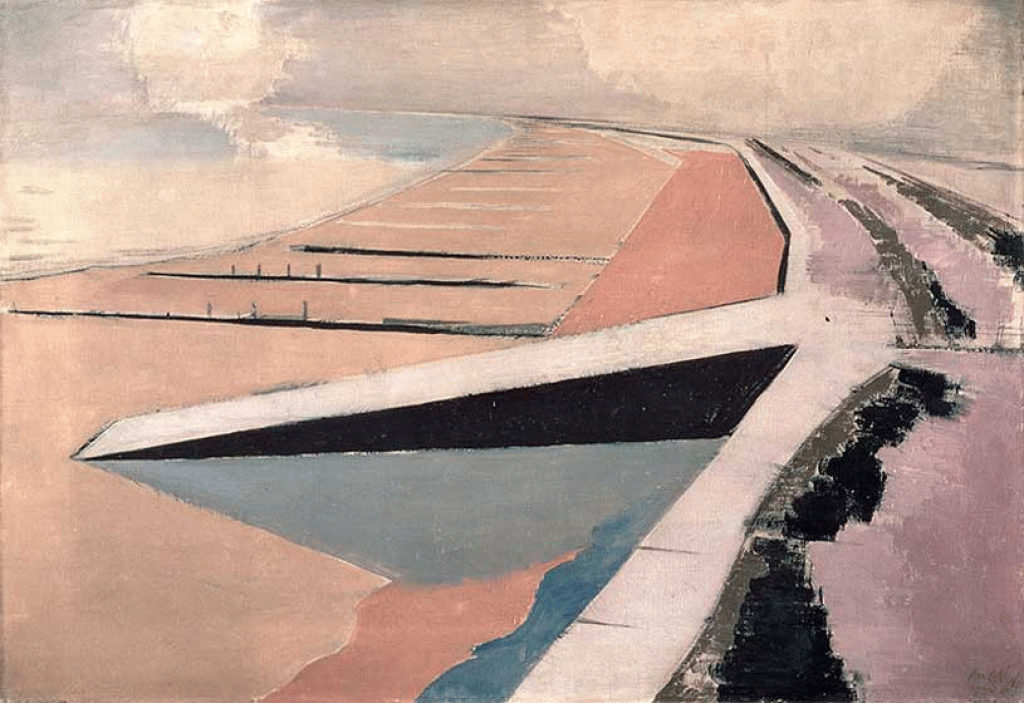
My talk focuses on the years 1920-33 when Nash and his wife Margaret lived in this far south-eastern corner of England. It was a time of change.
Traumatised by war, Nash had returned from France where had been an official war artist. At that time he became in his own words ‘a war artist without a war’. It began as a period of recovery. His stay at Dymchurch on the Kent coast he filled with mostly bleak and haunting images of sky, sea and land – the sea wall and long beach stretching faraway. So many of his paintings and drawings recalled the rather different kind of desolation he had experienced at the front.
In 1922 they moved to Iden in Sussex, a few miles inland from Rye. His landscapes of that time were, in turn, responses to the woods and orchards and the strangeness to be found in the patterns of cultivation and the placing of objects, lending a mystery to the scene. By the time they moved to Rye in 1930 Nash had begun to embrace the world of design and Modernism. Developing themes of abstraction and surrealism changed his direction, and design commissions, from posters to book illustration, to theatre, textiles and glassware followed. One commission, from Shell Mex, was his ‘Rye Marshes’ poster in the ‘Everywhere you go…’ series which adorned the company’s tankers. He also promoted a modern idea of design as a writer and critic, and encouraged colleagues, students and emerging artists to take a broad view of creativity.
My contention is that those years enabled Nash to rethink his work and set him on a career as one of the most influential English artists of the first half of the 20th century. He became our Modernist interpreter of the English landscape, discovering its hidden meanings, both real and surreal. Because of him, we now see the world differently – most especially when we walk the open spaces of the shorelines, marshes and countryside around Rye and Romney Marsh.